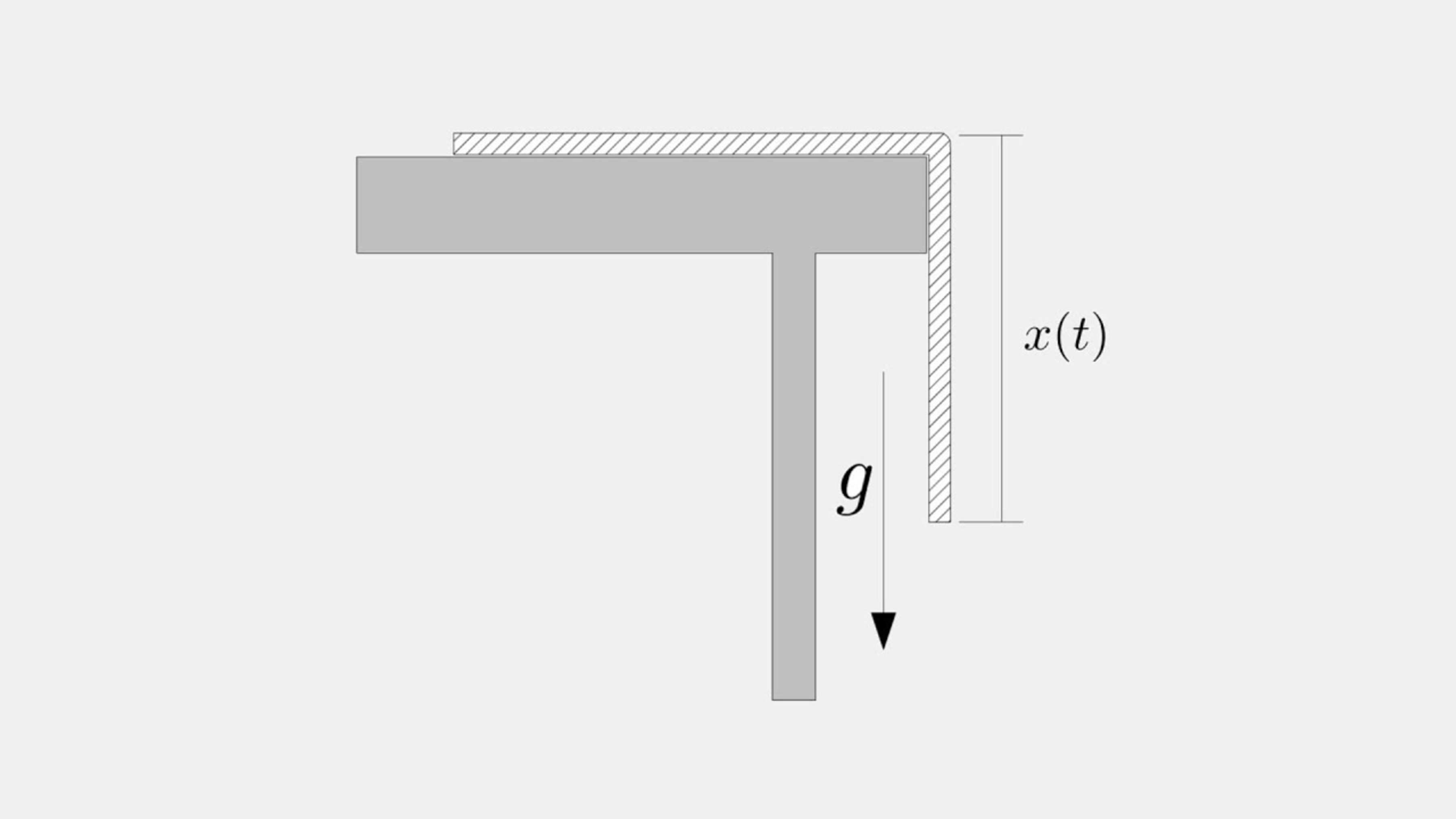The classic rope on table problem (with a twist)
Difficulty: Good for learning how to formulate differential equations from systems. Medium level.
Most of us have tried this classical mechanics problem:

The rope sliding on table problem. The rope is of length l meters and mass m , and the hanging part is of length x . However, this time, there is friction; find the time taken for the rope to fall off the table, ie. x = l .
Enter your answer in seconds.
Relevant information:
- x 0 = 2 meters (part of rope that is hanging)
- l = 1 0 meters
- m = 1 0 k g
- Gravitational acceleration is g = 1 0 m / s 2
- Coefficient of friction (only on the table) is μ = 0 . 2 ; friction force can be given by μ N
- The string is of uniform density.
The answer is 3.5708.
This section requires Javascript.
You are seeing this because something didn't load right. We suggest you, (a) try
refreshing the page, (b) enabling javascript if it is disabled on your browser and,
finally, (c)
loading the
non-javascript version of this page
. We're sorry about the hassle.
2 solutions
@Krishna Karthik Did you have solved that 36 Newtonian mechanics problems?
Log in to reply
Not yet. I'm busy with school work and only solved a few. Thanks mate :)
@Bilu Bilu
Log in to reply
@Krishna Karthik who us bilu bilu?
Log in to reply
An online friend. He's apparently on brilliant too. He's trying to learn advanced maths and physics.
@Krishna Karthik
Bro I want to change my name again?
But I am not able to change. Do you know how to change it again?
Log in to reply
Talk to brilliant admin; they will help you with the name change. Send a letter to brilliant, and tell them the name you want to change to
The equation of motion is derived by @Krishna Karthik . I have not done anything fundamentally different. I have simply plugged in the parameters into the derived equation and numerically integrated it as shown:
1 2 3 4 5 6 7 8 9 10 11 12 13 14 15 16 17 18 19 20 21 22 23 24 25 26 27 28 29 30 31 32 33 34 |
|
Nice numerical solution. Thanks mate :) (upvoted)
Hi; I think you can read my response here. About my deleted problem, the equations of motion I got were:
(1) m x ¨ = T ± μ N − F s cos θ
(2) m g − T = m x ¨
Where N = m g − F s sin ( θ )
T = m g − m x ¨ ; is that right?
I might repost the corrected version of this question soon.
We can treat the rope as a pulley with two different masses; a mass on the table, and a hanging mass.
The hanging part's mass can be given mathematically by l x m , and the table part's mass is l l − x m
Newton's 2nd law:
l x m g − l l − x m x ¨ = l x m x ¨
Solving the equation above yields:
m x ¨ = l x m g
However, with friction, the equation of total force is:
m x ¨ = l x m g − μ l l − x m g
Solving the equation numerically, with initial condition x 0 = 2 and x f = 1 0 the time is 3 . 5 7 0 8 seconds.